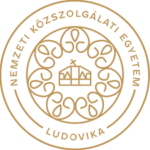Decrypting Easter’s complex series of rites is an occupation of many lifetimes. Present author’s sharings on this platform comprise of her lived experiences that have implications on her process of moving towards mindful action. This year on Holy or Great Week – named after God’s great deeds carried out during this period – a unique musical experience of a unique musical formation, Modern Art Orchestra’s adaptation of Ferenc Liszt’s 15-part oratorio that was originally composed for church performance in 1879 induced some revelations that are framed into the coming wisdom-nuggets.
For centuries, depiction of the events discussed in the Bible and especially in the Gospels dominated Western art. One of the first comprehensive treatment of the Passion, also an important milestone in Western art that marks the beginnings of perspective painting is part of Giotto di Bodone’s (1267-1337) monumental fresco-series that cover the interiors of the Arena Chapel in Padua. The subsequent great masters such as Leonardo, Michelangelo, Dürer, Grünewald, Breughel, Bosch, Titian and Tintoretto all sought to emote the noblest of feelings in the church visitors to engage them to the cause of the Church as Catholicism, being a missionary religion, attempted to utilize all means, especially art, to convince the congregation about the truthfulness of its teachings on which its rules and laws has been based.
During the last two centuries since religion has been losing its role in determining people’s values, choices and behaviour, religious themes lessened in art, and those that persisted shifted their emphasis on communicating the artist’s personal encounter with the divine. So is the case with Ferenc Liszt (1811-1886) who gave a sonic interpretation of these almost canonised series of imagery and went into great pains to gain audience to his late composition, Via Crucis. Liszt in his lifetime has never heard his opus being played as the publishers rejected his oeuvre for sounding too secular for its theme. In recent years this surprisingly modern piece was commissioned to be rearranged by the finest composers of the contemporary Hungarian music scenario – both members of the Modern Art Orchestra and musicians who work with them closely – for the 2022 Liszt Ferenc Festival. In the adaptation only the soloists were retained – although Pilate’s and Jesus’s voices altered to two female vocalists –, the role of the choir was taken over by the orchestra and the organ solos were played on a Hammond-organ.
The Modern Art Orchestra is a very significant artistic workshop that has been broken traditional boundaries since its formulation in 2005. The big band formation comprises not only of jazz- but classical-musicians, and musicians and composers of all sorts of backgrounds for various audiences find great delight to play with or compose for the ensemble. The greatest attraction of the orchestra is that they themselves very apparently delight in playing together. During their performance, within the free atmosphere of jazz music, we may gain a very lively and personal experience about the bliss of the continuous birth of harmony. As it seems, deep joy in what we do is a great guide to passing through our beliefs – a factor often lacking in the academic world, not to mention the sustainability arena. The tone we use for sustainability discourse is most often critical and moralizing, appealing to the listener’s sense of guilt and shame – anxiety is one of the most often cited emotion when it comes to the future of human life on this planet.
Via crucis, the road of the cross’s many-layered teachings show us how the scheming of the mind conquers over the openness of the heart and with that how we sacrifice the very power in us that would bring about our salvation. From the fourteen stages of the cross and the corresponding movements of Liszt’s oeuvre, although all of them are deeply moving, the most cathartic moments come about during the 12th, Christ’s death on the cross and the 13th, the descent of his corpse from it. Here, Jesus, as at the beginning of his terrestrial journey, returns into the lap of his mother, this time his worn body covered in wounds and blood. Easter Eve – when the concert took place – is the day when fire and water is consecrated – Jesus, being the symbol of fire, Catholics celebrate the birth of light again, just as during Christmas Eve. Fire is not only about flames, but the energy of transformation, the kind of grace we all pray for when we want change in our lives.
A child in her mother’s laps is a very ancient imagery: Parvati with Ganesha, Isis with Horus all depict the same scene as Mary with Jesus. In Sanskrit, the word for mother, mata, also denotes measure. A mother figure symbolises not only the giving birth and the nurturing of a human-child but on a higher plane she is the bestower of our fervour, the inner light in us that grants us with creativity, the continuous birth of fresh experience unfettered from our unprocessed previous experiences that condition our biases about good and bad, right and wrong and cloud our ways of looking at things anew. With the birth of the fire of transformation in ourselves we not only become capable of digesting our previous conditionings, but we reach the source, the divine mother’s lap, where the unmanifested becomes manifested, and the unmeasurable becomes measured – available for the grasp of our intellect.
A unique feature of Western religion is that the symbol of faith is Christ on the cross and there is a tendency to focus on the sufferings of this figure of divine descent than his unlimited, unconditioned bliss and joy. We tend to equate piety or the right deeds with something sober, bleak and austere. Musicians are suspicious creatures; we all know the tale of the ant and the cricket, and we side with the ant and agree that the cricket, for all the joy he experienced, he deserves to freeze and starve to death. Sustained, disciplined practice and joy is an either-or-choice as if the former was not the preliminary of the latter. Brain science in our days provides us with ample facts that the foundation of a balanced life rests on appropriate dopamine management – a lifestyle very reminiscent to that of a musician or anyone who sacrifices the feeling of immediate gratification, most often mistaken for the emotion of joy, for the monotony of honing one or more skills. We tend to think that creativity is something we may spice up with our daily dull routines. We want God to come on top of our already gathered stuff or try to reach the divine in our terms and are stirred if others with “less merits” reach there with seemingly great ease.
There is no attempt here to prove that life is all fun and games – if there was one feeling that listening to Liszt’s opus evoked, it was a realisation that life is a one-person journey on a one-way road. It is not events or people who accompany us, but our emotions and no matter how we try to supress or crucify them, they will reborn until we learn to deal with them. Jesus’s timeless uttering on the cross is one of the finest teachings about the meaning or goal of human existence: “Consummatum est”.
Illustration: Finale of the performance – Modern art Orchestra in Budapest Music Centre on Easter Eve (source: author’s own photo)






